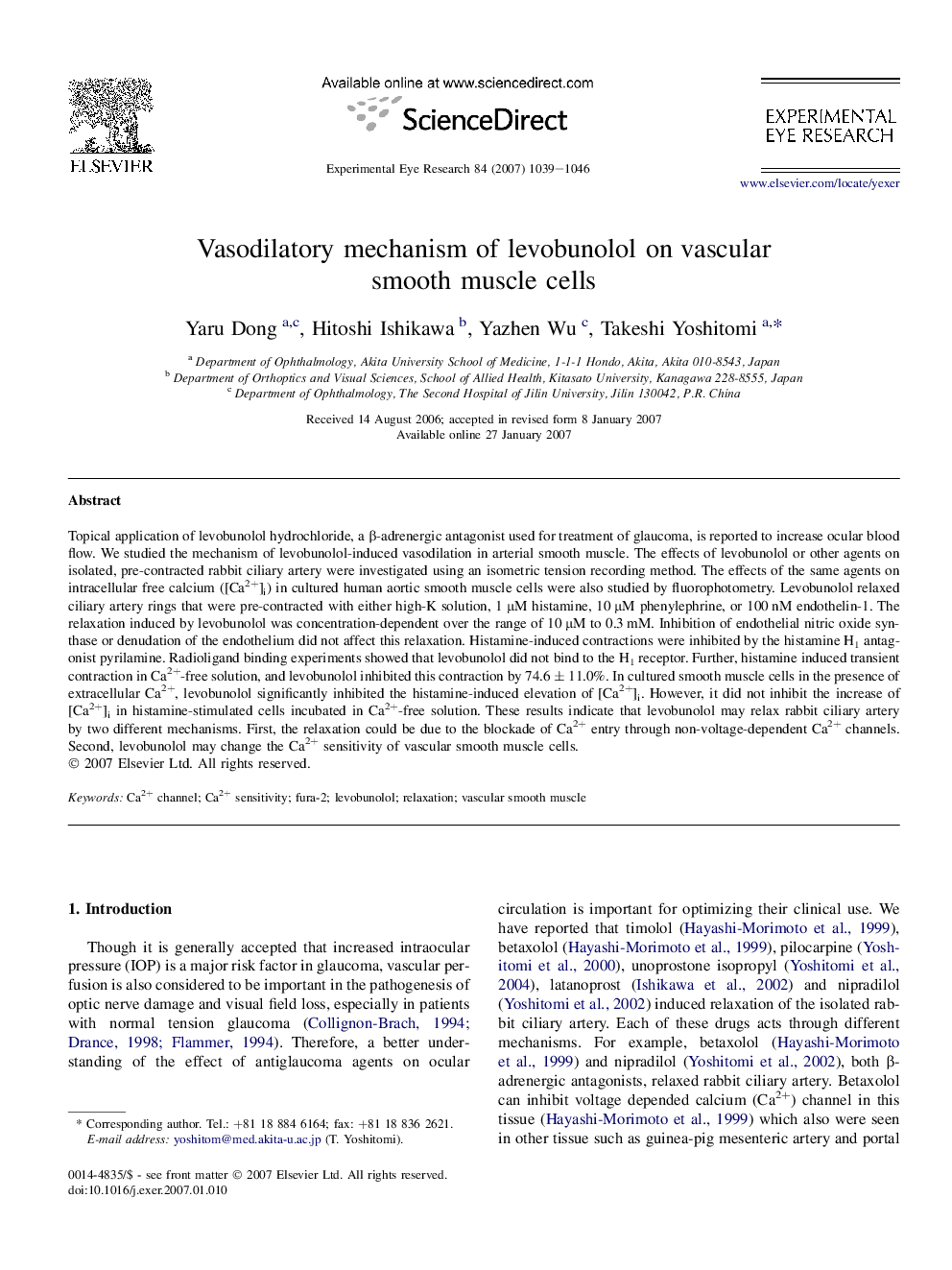| Article ID | Journal | Published Year | Pages | File Type |
|---|---|---|---|---|
| 4012424 | Experimental Eye Research | 2007 | 8 Pages |
Topical application of levobunolol hydrochloride, a β-adrenergic antagonist used for treatment of glaucoma, is reported to increase ocular blood flow. We studied the mechanism of levobunolol-induced vasodilation in arterial smooth muscle. The effects of levobunolol or other agents on isolated, pre-contracted rabbit ciliary artery were investigated using an isometric tension recording method. The effects of the same agents on intracellular free calcium ([Ca2+]i) in cultured human aortic smooth muscle cells were also studied by fluorophotometry. Levobunolol relaxed ciliary artery rings that were pre-contracted with either high-K solution, 1 μM histamine, 10 μM phenylephrine, or 100 nM endothelin-1. The relaxation induced by levobunolol was concentration-dependent over the range of 10 μM to 0.3 mM. Inhibition of endothelial nitric oxide synthase or denudation of the endothelium did not affect this relaxation. Histamine-induced contractions were inhibited by the histamine H1 antagonist pyrilamine. Radioligand binding experiments showed that levobunolol did not bind to the H1 receptor. Further, histamine induced transient contraction in Ca2+-free solution, and levobunolol inhibited this contraction by 74.6 ± 11.0%. In cultured smooth muscle cells in the presence of extracellular Ca2+, levobunolol significantly inhibited the histamine-induced elevation of [Ca2+]i. However, it did not inhibit the increase of [Ca2+]i in histamine-stimulated cells incubated in Ca2+-free solution. These results indicate that levobunolol may relax rabbit ciliary artery by two different mechanisms. First, the relaxation could be due to the blockade of Ca2+ entry through non-voltage-dependent Ca2+ channels. Second, levobunolol may change the Ca2+ sensitivity of vascular smooth muscle cells.
